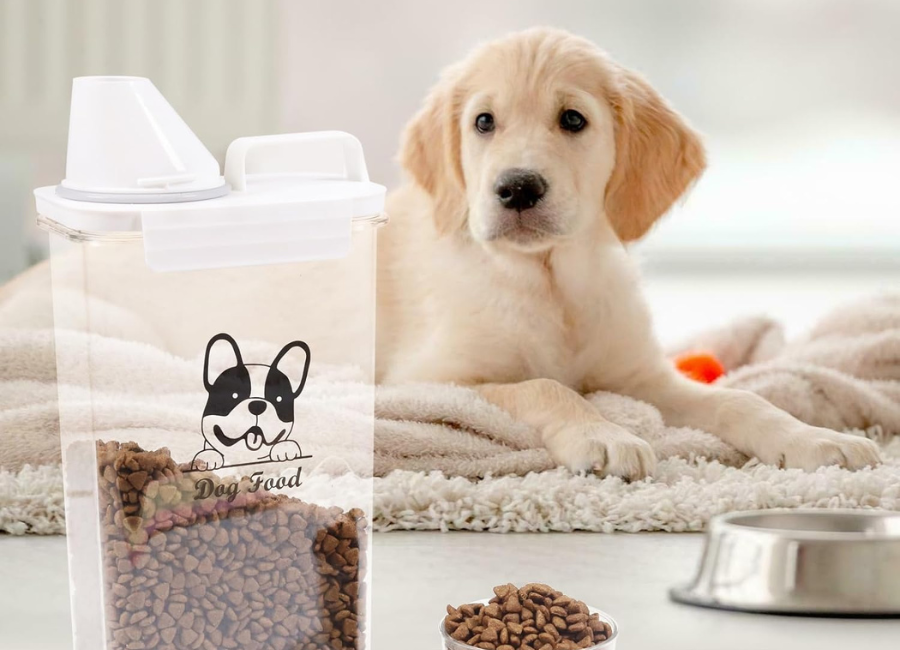What is Kibble and How to Choose the Right One!

A Brief Kibble History Lesson
The story of kibble begins in 1860 with James Spratt's "Meat Fibrine Dog Cake," but the real revolution came in the 1950s when Purina developed a more scientific approach to pet food production. Through a process called extrusion, they created the first lightweight, porous kibble food that combined complete nutrition with improved digestibility. This innovation changed pet food forever, leading to today's highly sophisticated pet nutrition industry, where you can now find high quality kibble for dogs to meet every specific dietary need.
What is Kibble
Kibble or Kibbles is the dry, bite-sized pieces of food that many pets, particularly dogs and cats, eat as their main diet. Think of it as a complete meal in the form of small, crunchy nutritionally dense nuggets.
What is Kibble Made Of?
Kibble may look like simple, crunchy little pieces, but there's more to it than meets the eye! It’s essentially made up of a blend of ingredients, typically meats, grains, vegetables, and added vitamins and minerals designed to give your dog the nutrients they need. However, not all kibble is created equal, and the quality of kibble can vary quite a bit between brands.
Many standard kibble, even some well known “Premium Brands” use cheaper fillers like corn, wheat, and by-products, which may not offer the same nutritional benefits as higher-quality ingredients.
Always look for kibble that lists meat as the first ingredient, uses high-fibre veggies like sweet potatoes, along with beneficial extras like omega fatty acids and antioxidants. These ingredients support everything from joint health to a shiny coat, so paying attention to what goes into your dog’s bowl can make a big difference in their overall health and happiness!
Typical ingredients in kibble include:
|
Low Quality Kibble |
High Quality Kibble |
|
|
Protein |
By- Products, Unspecified “Meat”, the terms “and/or” |
|
|
Carbohydrates |
Corn, Wheat, Rice, Potato |
Ancient Grains, Sweet Potato, |
|
Fats |
Unspecified Fats (generic terms) lard, Hydrogenated Oils, corn oil, soybean oil |
Fish Oil, Flaxseed Oil, Chicken Oil, Coconut Oil |
|
Vitamins and minerals |
Avoid any synthetic vitamins and minerals |
Natural Vitamins and Minerals |
|
Fibre |
Beet Pulp, Corn Fibre, Cellulose, Wheat Bran, Potato Fibre |
Sweet Potatoes, Pumpkin, Brown Rice, Oats, Chia Seeds, Flaxseed, Carrots, Peas, Lentils |

The Science Behind Kibble Production
1. Ingredient Selection
Modern kibble production starts with carefully selected ingredients:
- Proteins: Typically between 20-32%
- Carbohydrates Typically between 40 -65%
- Fats: Typically between 10-20%
- Fibre: Typically between 3-8%
- Micronutrients: Vitamins, minerals, and amino acids
2. The Manufacturing Process
Step-by-Step Breakdown:
- Grinding: Ingredients are ground into a fine flour (particle size typically 2-7 millimetres)
- Mixing: Dry and liquid ingredients are combined in precise ratios
- Conditioning: The mixture is steam-heated to 71-82°C
- Extrusion:
- Dough is forced through an extruder under high pressure
- Temperature reaches 104-138°C
- Exposure time: typically 20-30 seconds
- Cutting: Shaped dough is cut into kibble-sized pieces
- Drying: Moisture is reduced to 8-10% to prevent bacterial growth
3. Quality Control
Each batch (should) undergo rigorous testing:
- Nutrient analysis
- Microbiological testing
- Palatability assessments
- Shelf-life verification
The Great Kibble Debate: Pros and Cons
Advantages
- Convenience: Long shelf life, easy storage
- Consistent Nutrition: Balanced, complete nutrition in every bite
- Dental Benefits: Potential to reduce tartar build-up
- Cost-Effective: Generally more economical than other options
- Safety: Minimal risk of foodborne pathogens
Potential Drawbacks
- Processing: Some nutrients may be lost during manufacturing
- Moisture Content: Low moisture content (may require additional water intake)
-
Individual Needs: May not be ideal for pets with specific health conditions

What to Look For in the Best Kibble
1. Who Formulated the Recipes
The company should be transparent in telling you what qualifications the person formulating the meals have. These qualifications may include:
- Board Certified Veterinary Nutritionist (Highest expertise in dog nutrition)
- Animal / Pet Nutritionist (Has basic knowledge in formulation)
- Veterinarian (Qualified to recommend diets, great for general health, though may lack the knowledge to balance and formulate meals)
-
No Qualifications (Avoid due to lack of formal training)
2. AAFCO Statement
- Look for "complete and balanced nutrition" statement as a minimum
- Check if it meets AAFCO nutrient profiles
- Superior Formulations will exceed AAFCO nutrient profiles
3. Ingredient Quality
- Australian Ingredients
- Locally and Sustainably Sourced
- Natural Ingredients
- Transparent Labelling
4. Appropriate Protein Levels
- Adults: 18-25%
- Puppies: 22-32%
5. Manufacturing Quality
Look for brands with:
- In-house quality control
- Transparent sourcing
- Regular safety testing
- Recall history (fewer is better)
6. Avoid Questionable Ingredients
- Artificial colours (Red 40, Yellow 5, Blue 2)
- BHA, BHT, or ethoxyquin as preservatives
- Generic "meat by-products"
- Excessive fillers (corn, wheat or rice as first ingredient)
- Artificial sweeteners
-
High Sodium Levels (>400 mg of sodium per kilocalorie of food per day)

Remember, The best kibble is one that:
- Meets nutritional standards as a minimum
- Agrees with your pet's digestive system
- Supports overall health
- Fits your budget
-
Your pet willingly eats
Choosing the right kibble can feel overwhelming, but armed with knowledge about what to look for and what to avoid, you can make an informed decision for your pet's nutrition. Remember, while general guidelines are helpful, every pet is unique. Pay attention to how your pet responds to their food and always consult with your veterinarian for personalized advice.
Learn more: Is Kibble Bad for Dogs?
Common Myths Debunked
Myth 1: "Grain-free is always better"
Reality: Unless your pet has a specific grain allergy, grains can be a valuable nutrient source - depending on the type used.
Myth 2: "Raw ingredients listed means better kibble"
Reality: The cooking process can make nutrients more bioavailable.
Myth 3: "Higher protein is always better"
Reality: Excessive protein doesn't benefit most adult pets and can stress kidneys.





